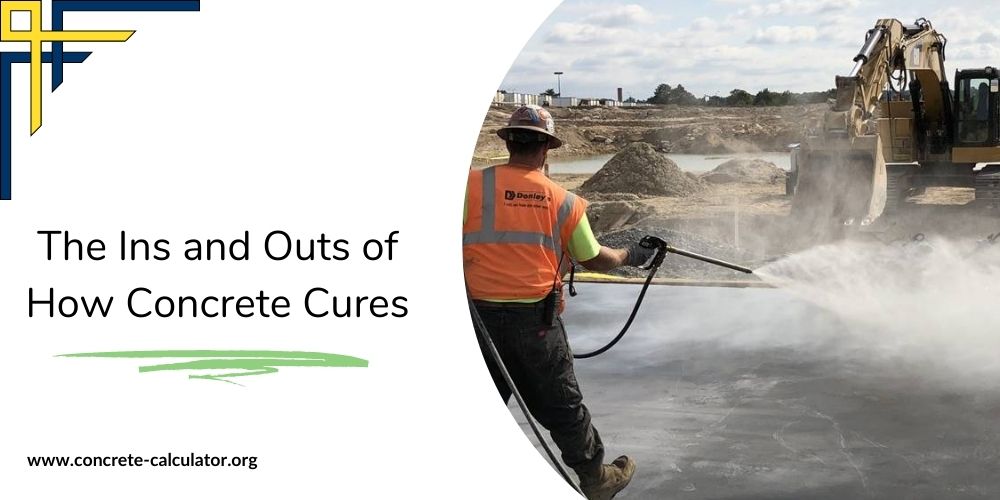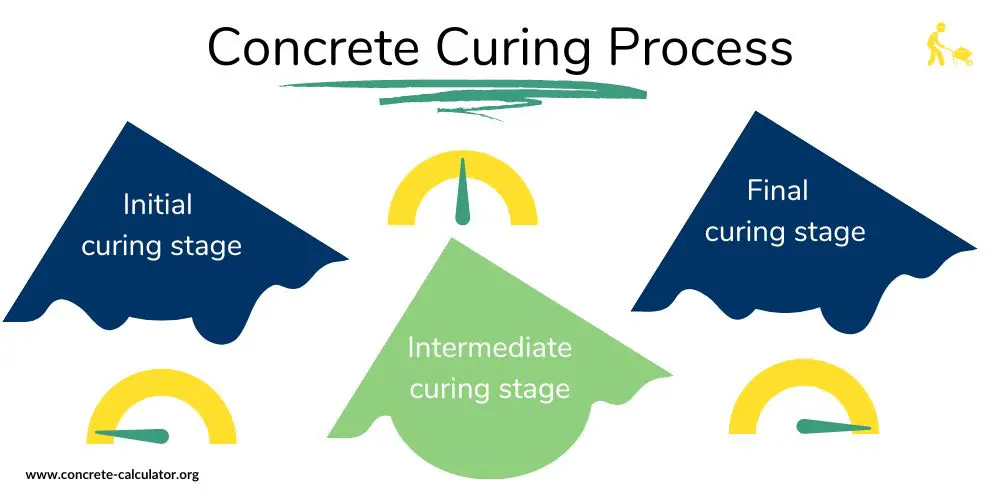Blog Introduction: Concrete may seem like a solid, unchanging material, but it is actually constantly changing even after it has been poured. As it sets and hardens, concrete goes through a complex chemical process known as curing.
This process is crucial for ensuring the strength, durability, and longevity of concrete structures. In this blog post, we’ll break down the different stages of the curing process and explain what happens during each one.

Concrete Curing Process
The curing process begins as soon as concrete is mixed and poured into forms. It can be divided into three distinct stages: initial, intermediate, and final. below is step by step explanation
1. Initial Curing Stage
The first stage of concrete curing begins as soon as the concrete is poured. During this stage, the process of hydration begins as water is mixed with the cement, triggering a chemical reaction that binds the materials together.
The concrete will still be wet and malleable at this point, and it’s critical to protect it from any disruptions or external stresses that could affect its setting or hardening. Concrete specialists often use blankets, plastic sheeting, or other coverings to prevent the concrete from drying out too quickly, especially in hot, dry conditions.
You should use a concrete slab calculator so concrete cures in less time.
2. Intermediate Curing Stage
As the hydration process continues, the concrete will start to harden and gain strength. This intermediate stage can last up to several weeks, and during this time the concrete must be kept damp to prevent cracking and shrinking.
This can be accomplished with the use of water sprays or wet coverings. As the concrete dries, the hydration process slows down, but it’s important to maintain a consistent moisture level to prevent uneven strength and cracking.
3. Final Curing Stage
The final stage of concrete curing can take anywhere from a few weeks to several months. During this stage, the concrete is fully hardened and stabilized. It is important to monitor the concrete during this time, as it will still be susceptible to cracking or shrinking. Once the concrete has fully cured, its structural integrity and durability will be significantly increased.

Some Other Factors That Influence Curing
The curing process is influenced by a number of factors beyond just water and temperature. The type of cement and aggregate used, the thickness of the concrete, and the ambient humidity and wind conditions all play a role in determining how the concrete cures.
In addition, the use of additives or other chemical treatments can be used to modify the curing process and optimize concrete performance.
Read Also: How Concrete Is Poured
Importance of proper Concrete Curing
Proper curing is absolutely critical for ensuring the strength, durability, and longevity of concrete structures. In fact, many concrete failures can be traced back to improper or inadequate curing.
By understanding the stages of the curing process and carefully monitoring and maintaining conditions throughout, it is possible to produce concrete structures that will stand the test of time and provide reliable performance.
The most important factor is when it comes to curing concrete is that it’s not a one-time process. Instead, the curing process should be continuously monitored and adjusted over time in order to produce the best end result. By following the right procedures and taking the appropriate measures, you can ensure that your concrete will have the strength and longevity you need for
Also Check: How Concrete Walls Are Made
FAQ’s
How does curing concrete help to improve its strength?
Curing slows down the rate of water loss from the concrete, which helps it maintain its strength. As the concrete matrix continues to harden and gain strength, the amount of water needed to ensure proper hydration and hardening is reduced. The slower evaporation also ensures that the cement particles have sufficient time to be fully hydrated and form strong bonds, resulting in stronger concrete.
How long should concrete curing last?
The minimum length of time for curing is typically between two and seven days, depending on the weather conditions. In cold weather climates, it may take up to 28 days for the concrete to reach full strength.
What are some methods for curing concrete?
There are several methods available for properly curing concrete, including ponding, fogging, and membrane curing. Ponding involves using a shallow pool of water to keep the surface of the concrete wet; fogging is done by spraying a continuous mist over the concrete surface; and membrane curing involves wrapping the surface in plastic or other materials.

